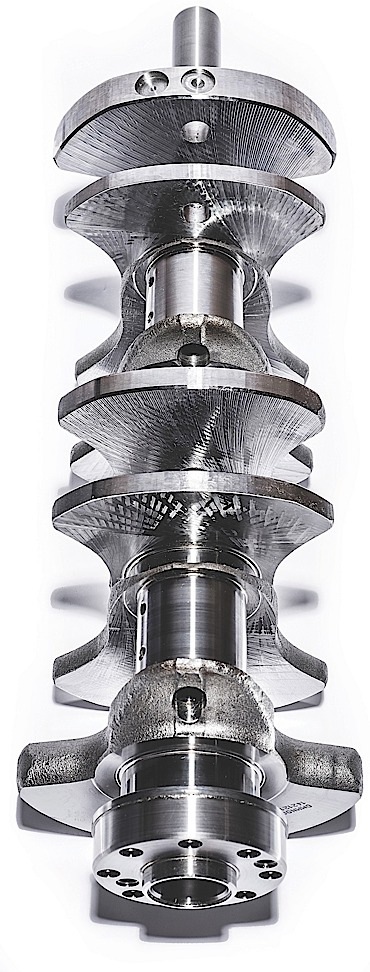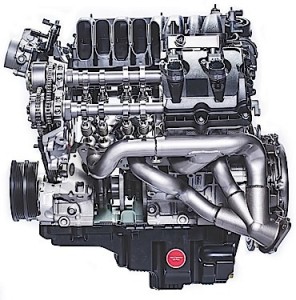
When the phrase “bundle of snakes” is uttered about an exhaust system, two cars come to mind: the Ford GT40 and Lotus 38. These were not the first vehicles to use this type of exhaust configuration, but they were the first to be called a “bundle of snakes” and make exhaust systems look more like art than science. These complex exhaust systems were created as a solution to the problem caused by the use of a flat-plane crankshaft.
Most engines use a cross-plane crankshaft. On this type of V8, the crankshaft fires every 90 degrees, and two pistons in a bank are always at the top and firing. This is good for scavenging exhaust gases because the exhaust pulses and the cylinder to be scavenged are on the same bank if using a four-into-one exhaust collector. But, a cross-plane crank does not rev as quickly due to the weight of the rotating mass caused by the counter weights.

A flat-plane crankshaft is lighter due to the lack of counter weights. But, the exhaust pulse needed to help scavenge a cylinder is 180 degrees apart and now on the opposite bank of the engine due to the crankshaft configuration and firing order. This is what the “bundle of snakes” solves.
The bundle of snakes uses two four-into-one collectors. The equal-length exhaust runners crisscross so the appropriate runners are positioned next to each other in the collector to create the scavenging effect.

For the 2015 Shelby Mustang GT350, Ford is using a flat-plane crankshaft for the 5.2L V8. Putting a bundle of snakes under the hood was not an option. Instead, Ford engineers had to go with a four-into-three-into-two design that does not look as efficient.













